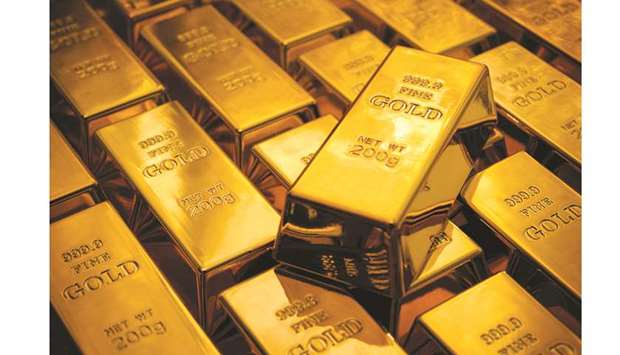Executives headed to the Denver Gold Forum a year ago were hit with a startling bit of news as they stepped off their planes: A merger made public that afternoon was set to create the world’s biggest gold company.
Now, a year after Barrick Gold Corp agreed to buy Randgold Resources Ltd, and in the wake of a second huge megamerger, executives are once again travelling to the Denver meeting, which opens today. Only this time, the industry will be watching to see if mid-tier miners concerned about losing out to larger rivals are ready to jump into the M&A game.
Gold is near a six-year high, and industry shares are up about 70% in the past 12 months. Meanwhile, the amount of gold reserves still buried in mines is down by more than half from a 2011 peak. It’s a potent mix that may push miners toward consolidation over expansion for growth.
“M&A can trigger a game of musical chairs,” said Matthew Hind, global co-head of metals and mining investment banking for Credit Suisse Group AG. “When one transaction happens and is well-received, there is a tendency for others to want to try and find their partner, nobody wants to miss out.”
Acquisitions of gold producers have already jumped to $18.2bn this year, the highest level in eight years, driven by the Barrick-Randgold merger and Newmont’s $10bn purchase of Goldcorp Inc this year, according to data compiled by Bloomberg. Meanwhile, the long-term outlook for gold prices remains bullish, with Citigroup Inc seeing potential for a record above $2,000 an ounce in the next two years.
“There will be depletion in gold reserves,” Newmont Chief Executive Officer Gary Goldberg said in a telephone interview this week. “At the same time, you have demand growing in India and China. So from a supply-demand standpoint, you’ll see good opportunity.”
A year ago, executives heading to the Denver Gold Forum were facing a much different situation. Bullion had slipped more than 7% in the year leading up to the meeting, and an expanding global economy diminished demand for the metal as a haven.
The Philadelphia Stock Exchange Gold and Silver Index of 30 companies was down about 22%.
Much of the discussion at this year’s meeting is likely to centre on mergers and acquisitions. Credit Suisse’s Hind, for one, said he sees consolidation becoming a major industry factor in the next 12 to 18 months, with the mid-tier miners starting to play catch-up.
Among gold producers, Canada’s Guyana Goldfields Inc is exploring options including a potential sale of its business, Bloomberg News has reported last month. China National Gold Group Corp, the country’s second-largest gold miner, is also studying a bid for a stake in Canada’s Iamgold Corp, people with knowledge of the matter said in June.
New Gold Inc, Pretium Resources Inc, TMAC Resources Inc and Wesdome Gold Mines Ltd are potential targets for Australian miners looking to expand in Canada through acquisition, BMO analyst Brian Quast wrote in May.
“There’s a natural tendency for gold miners to consolidate, as most of them failed to invest for the future” by expanding their mining activities, Barrick Gold Corp CEO Mark Bristow said in an August interview in Toronto.
Meanwhile, the two megamergers are also expected to provide smaller rivals the opportunity to snap up assets.
Barrick is targeting $1.5bn of asset sales by end of next year and is engaged in selling its 50% stake in the Kalgoorlie mine in Australia, Bristow said. It’s also weighing a sale of its Tongon Gold mine in the Ivory Coast, people familiar with the matter said in August.
Newmont completed its $10bn acquisition of rival Goldcorp in April. It too is planning to divest up to $1.5bn in assets, taking advantage of the higher gold price, Goldberg said this week.
Assets up for potential sale include Red Lake in Canada, Newmont said Friday in a statement. Some operations at the mine were paused temporarily earlier this year to do work to protect workers in the event water entered the mine. In July, CEO Goldberg had said the company needed to do more exploration at Red Lake before deciding if it would sell.
Meanwhile, gold producers nowadays are also competing for attention from a smaller group of more passive investors who tend to put money in tracker funds, or index-related investments.
“There’s a need for consolidation as companies need to be larger to stay relevant to a shrinking pool of investors,” Richard Tory, global head of metals and mining investment banking at Morgan Stanley, said in a separate interview.

Acquisitions of gold producers have already jumped to $18.2bn this year, the highest level in eight years, driven by the Barrick-Randgold merger and Newmont’s $10bn purchase of Goldcorp Inc this year, according to data compiled by Bloomberg.
